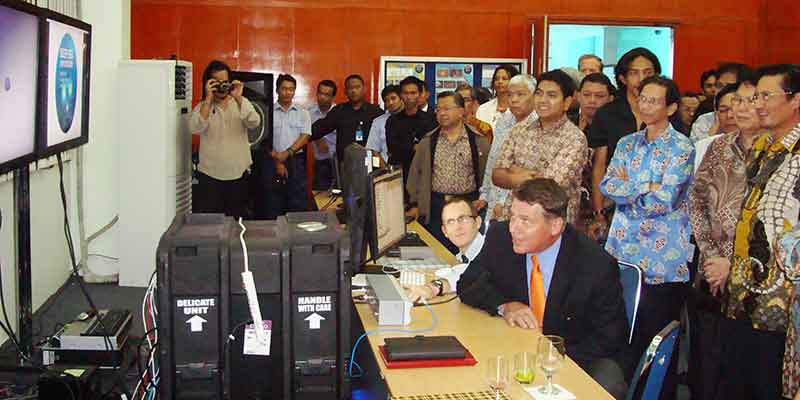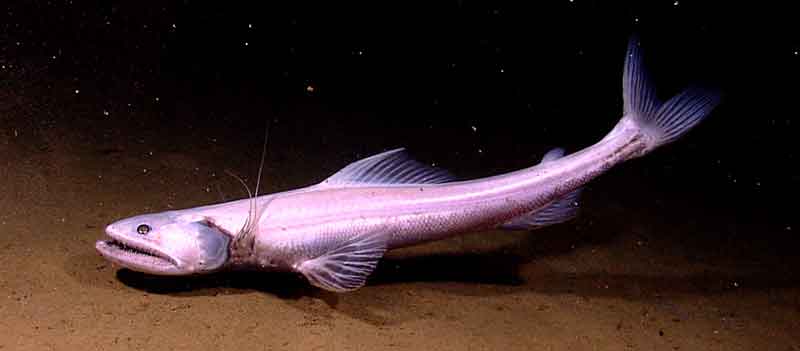
by Jeremy Potter, Expedition Coordinator, NOAA Office of Ocean Exploration and Research
July 26, 2010

During a visit to the Jakarta Exploration Command Center, U.S. Ambassador Cameron Hume speaks to U.S. and Indonesian representatives onboard NOAA Ship Okeanos Explorer. Minister Fadel of Indonesia’s Ministry of Marine Affairs and Fisheries stands behind him. Image courtesy of the NOAA Office of Ocean Exploration and Research, INDEX-SATAL 2010. Download larger version (jpg, 5.4 MB).
“Creative solutions turn challenges into opportunities.” U.S. Ambassador to Indonesia Cameron Hume wrote those words in an op-ed a few years ago. He also lives by them. The INDEX-SATAL 2010 expedition was one of those rare opportunities that he envisioned. It seems quite appropriate that one of his biggest successes is bearing fruit in the waning time of his tour as U.S. Ambassador to Indonesia.
It is no secret that the United States and Indonesia both face huge environmental challenges. What may have surprised many people is that the Ambassador highlighted the environment as a critical component of any future U.S.-Indonesian comprehensive partnership.

Indonesian scientists and staff in the Jakarta ECC whipped out a plethora of personal digital cameras when the remotely operated vehicle imaged this over 70-centimeter-long, scraggly toothed bathysaurus fish. Image courtesy of the NOAA Office of Ocean Exploration and Research, INDEX-SATAL 2010. Download larger version (jpg, 791 KB).
He identified scientific research and scientists themselves as critical in this effort. Alfred Russell Wallace navigated the waters of Indonesia 150 years ago to make fundamental advances in science. The Ambassador continued this quest for knowledge and pursuit of collaborative international research as a way to find solutions to the world’s greatest problems.
July 26 was the Ambassador’s day to celebrate one significant step in that direction. Today, Minister Fadel of Indonesia’s Ministry of Marine Affairs and Fisheries hosted a going away event for Ambassador Hume in the Jakarta Exploration Command Center. During the event, the Minister and the Ambassador spoke with Indonesian and U.S. representatives on NOAA Ship Okeanos Explorer. Together they reminisced about the daunting challenges that once stood firm in the way of making this expedition and a new course for the strong future of U.S.-Indonesian scientific interaction possible as well as a successful reality. More importantly, they celebrated the successes to date and the broader significance of the milestone that now exists: the improvement of U.S.-Indonesia relations.

At a special farewell event hosted by the Indonesian Ministry of Marine Affairs and Fisheries, Minister Fadel congratulates U.S. Ambassador Cameron Hume on a successful expedition and tenure in Indonesia. Image courtesy of the NOAA Office of Ocean Exploration and Research, INDEX-SATAL 2010. Download larger version (jpg, 640 KB).
In his op-ed, the Ambassador noted that, “We need the greatest minds – from Indonesia, the U.S., and the world – to find the creative solutions to turn these challenges into opportunities.” Well Mr. Ambassador, we certainly think you lead by example. Your leadership and drive are a primary reason we got here.